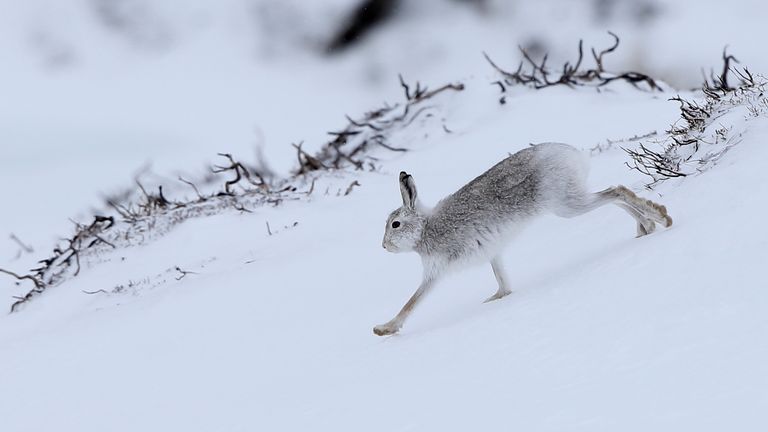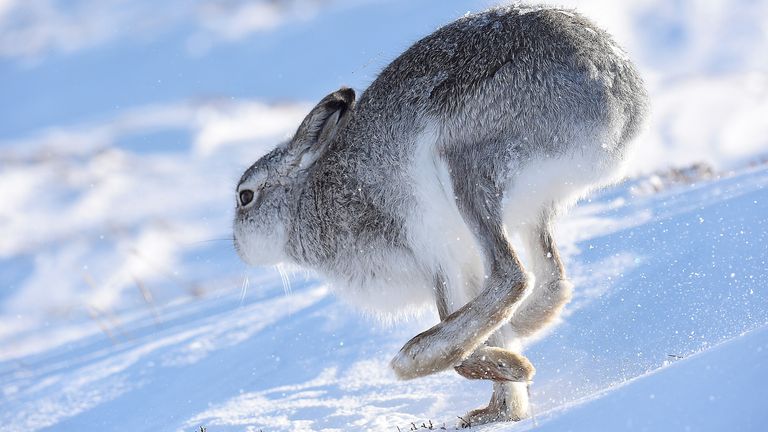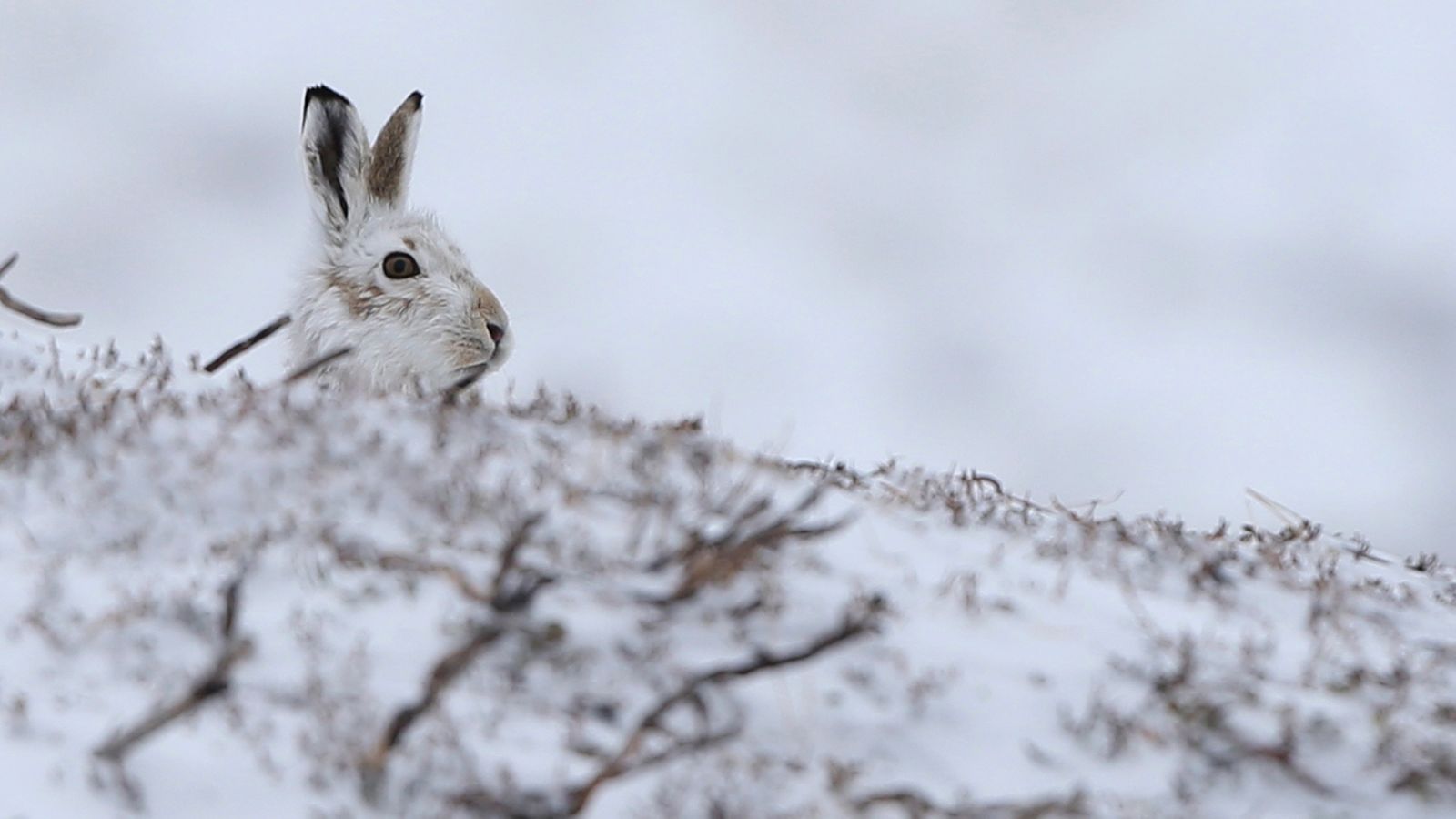Mountain hares in Scotland are becoming more vulnerable to predators due to an increasing number of days without snow, a study has found.
Research has shown how their moult times – the shedding of old fur or skin – has not kept pace with the changing climate, which has seen a sharp decline in days with snow conditions.
In the winter, mountain hares – which are commonly found in the Scottish Highlands and northern parts of England – are able to blend into their surroundings when they shed their dark fur for white.

The routine moulting allows them to camouflage themselves on snowy landscapes, but fewer days without the white conditions means they have become more at risk as they stand out on the dark mountains.
It comes as scientists continue to warn of the impact of climate change with this year on track to be one of the hottest on record – while Europe has just had its warmest autumn.
Analysis by the Met Office recently warned that by 2080, only very high ground and parts of northern Scotland could still see freezing temperatures in the UK.
Some studies have found other animals have been able to adjust their moult times, allowing them to continue to blend in with the conditions.
But the latest study, published in Proceedings of the Royal Society B, found the mountain hares are going without a matching coat to their surroundings for around 35 days more compared with 65 years ago.
It said that across the world, “multiple species moult from a dark summer to white winter coat to maintain camouflage against snowy landscapes”.
However, it added that “decreasing snow cover duration owing to climate change is increasing mismatch in seasonal camouflage”.

The report “found little evidence” that moulting in the mountain hares in Scotland has changed to “align seasonal coat colour with shorter snow seasons”.
The researchers looked at records of mountain hare moults from the 1950s and compared them with observations taken at Scottish sites in 2015 and 2016 alongside the analysis of weather data.
The report’s summary said “understanding whether organisms will be able to adapt to human-induced stressors currently endangering their existence is an urgent priority”.
